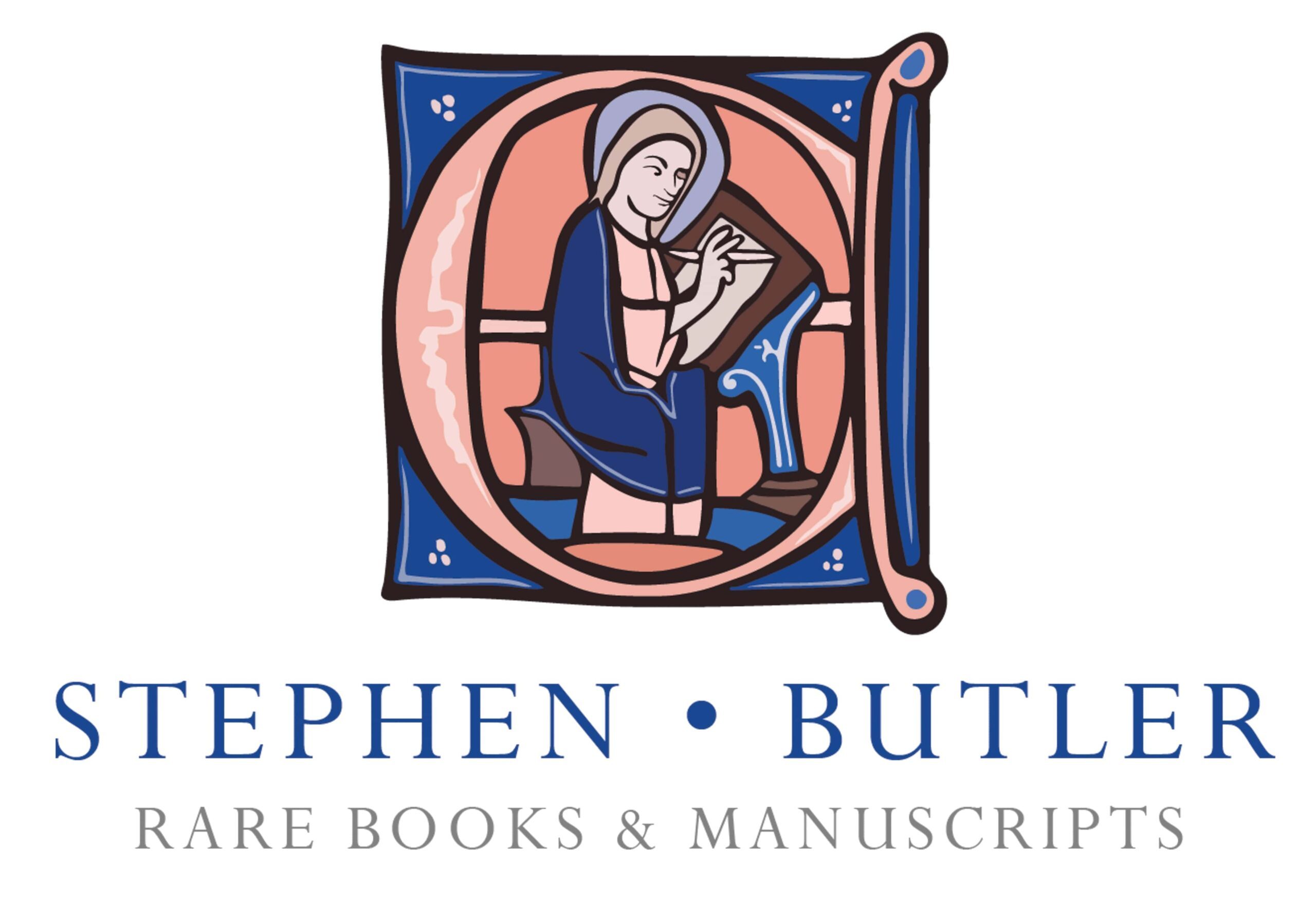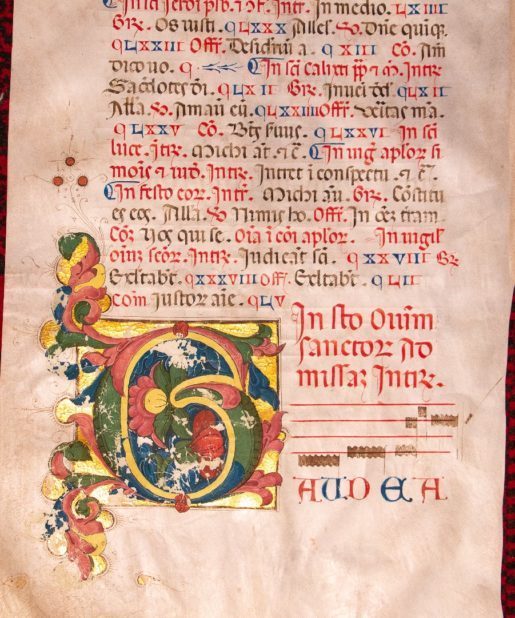Petrus Riga aurora (versified Bible) English C14th important parent MS once owned by Dukes of Westminster
£1,500.00
Leaf from a large English manuscript of Petrus Riga, Aurora, in the first redaction of Aegidius of Paris, in Latin verse, on parchment. [England, second half of fourteenth century (c. 1375)].
Approximately 285mm x 198mm. Single leaf, with 32 lines in a small and rounded English gothic hand much influenced by secretarial forms, paragraph marks set off in outer margin, script within ruled guide lines, leaf in very good, fresh condition.
Provenance
1. The large and impressive parent manuscript of these leaves was owned by the Grosvenor family, Dukes of Westminster; their sale Sotheby’s, 11 July 1966, lot 229 (when it had 267 leaves but was already missing a gathering and about 13 other leaves).
2. Francis Edwards, bookseller, who acquired it in the Sotheby’s sale, before removing three damaged leaves that had had their initials cut out (these now in a private UK collection), and advertising the rest of the codex in a number of his subsequent catalogues.
3. At some time later more leaves were removed from the main codex, or it was completely dispersed, perhaps in North America. One from the collection of Bernard Rosenthal (1920-2017) of San Francisco, appeared as Quaritch cat. 1348, Bookhands of the Middle Ages VIII (2007), no. 96, and other leaves now reside in Marquette University in Milwaukee as donations of Dr. and Mrs John Pick, as well as the University of South Carolina, their early MS. 125.4.
Text
This text, alongside the Bible and the works of Peter Lombard, was one of the fundamental textbooks used in the thirteenth-century universities. The author was a canon of Rheims cathedral, and most probably died in 1209. It is a distillation of the historical passages of the Bible in verse, with a commentary and allegorical discussion. The leaf now in the University of South Carolina importantly reveals that the text here is the first redaction by Aegidius of Paris, composed c. 1200 (see P.E. Beichner, Aurora: Petri Rigae Biblia Versificata, 1965).
Petrus Riga was a medieval Latin poet and author who lived in the 12th century. He is best known for his poem “Aurora,” which is a Christian allegory about the creation of the world and the history of humanity. The poem is written in hexameter verse and consists of over 4,000 lines. “Aurora” draws heavily from biblical stories and teachings, as well as classical mythology, and it was widely popular during the medieval period. Petrus Riga’s work represents an important contribution to medieval literature, and “Aurora” remains a significant example of Christian allegory and poetic storytelling from the time period.
Be the first to review “Petrus Riga aurora (versified Bible) English C14th important parent MS once owned by Dukes of Westminster” Cancel reply
Product Enquiry
Related products
C14th -C16th manuscripts
Illuminated inital 1500 huge leaf on vellum, from Siena or Florence.
C14th -C16th manuscripts
Unknown codex by humanist Bernardius Florentius, 1476, Florence, Italy
C14th -C16th manuscripts
Finely produced illuminated leaf from a French Psalter, c.1480
C14th -C16th manuscripts
A fine leaf from the Llangattock Breviary, Italy c.1450 with delicate illumination on vellum
C14th -C16th manuscripts
Historiated initial OT prophet, Italy c.1320 (Emilia-Romagna)
C14th -C16th manuscripts
C14th -C16th manuscripts


















![Leaf from Baldo degli Ubaldi (1327–1400), Sextum codicis librum commentaria [Italy, late 15th century] Leaf from Baldo degli Ubaldi (1327–1400), Sextum codicis librum commentaria [Italy, late 15th century]](https://butlerrarebooks.co.uk/wp-content/uploads/2023/07/IMG_0101-515x618.jpg)


![Leaves from a portable Missal with a reading by Bede (his homily for the Feast of the Annunciation of the Virgin) in Latin, manuscripts on parchment. [England or low countries 14th century]. Leaves from a portable Missal with a reading by Bede (his homily for the Feast of the Annunciation of the Virgin) in Latin, manuscripts on parchment. [England or low countries 14th century].](https://butlerrarebooks.co.uk/wp-content/uploads/2023/06/IMG_9977-scaled-515x618.jpg)
![Leaves from a portable Missal with a reading by Bede (his homily for the Feast of the Annunciation of the Virgin) in Latin, manuscripts on parchment. [England or low countries 14th century]. Leaves from a portable Missal with a reading by Bede (his homily for the Feast of the Annunciation of the Virgin) in Latin, manuscripts on parchment. [England or low countries 14th century].](https://butlerrarebooks.co.uk/wp-content/uploads/2023/06/IMG_9975-scaled-515x618.jpg)
Reviews
There are no reviews yet.